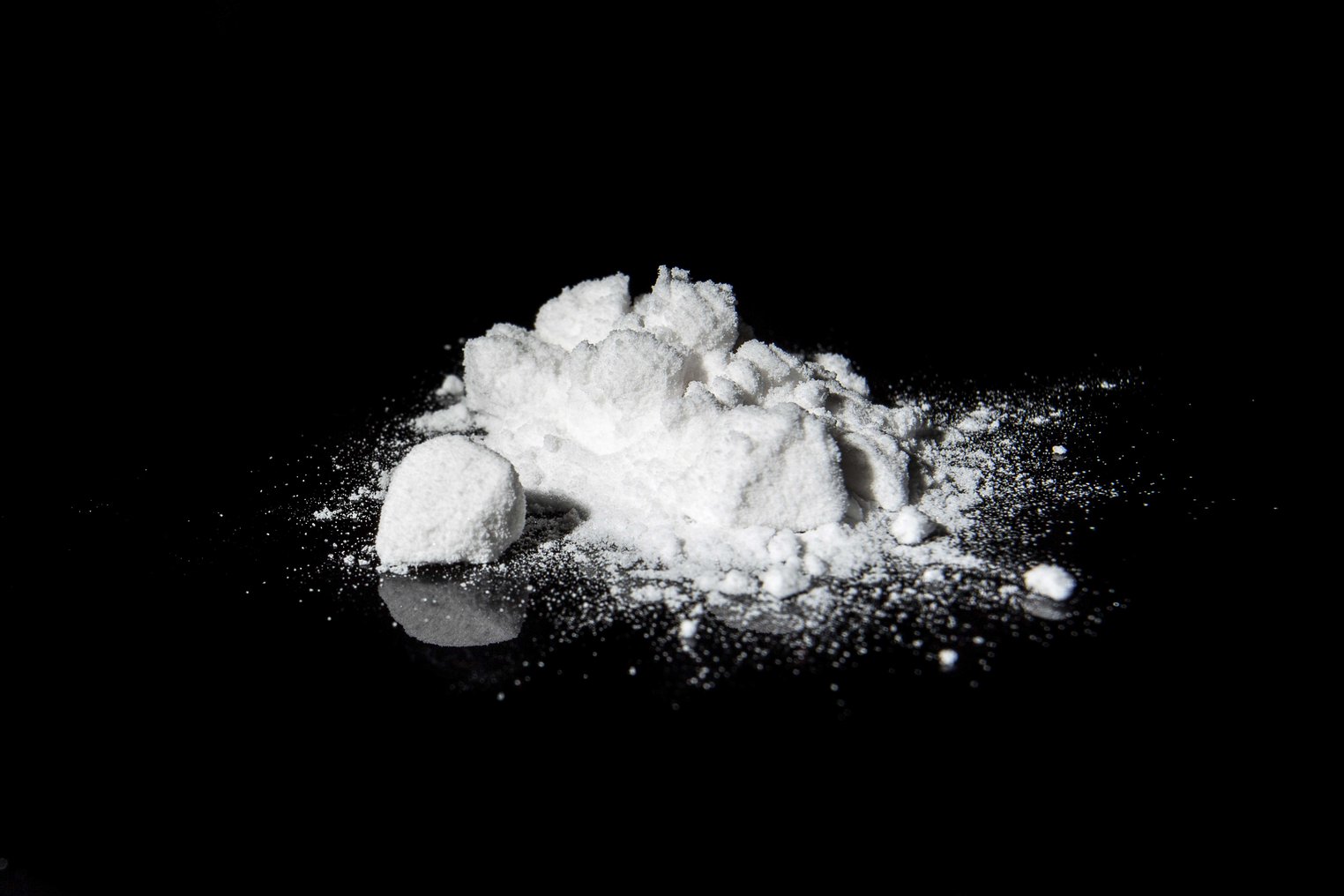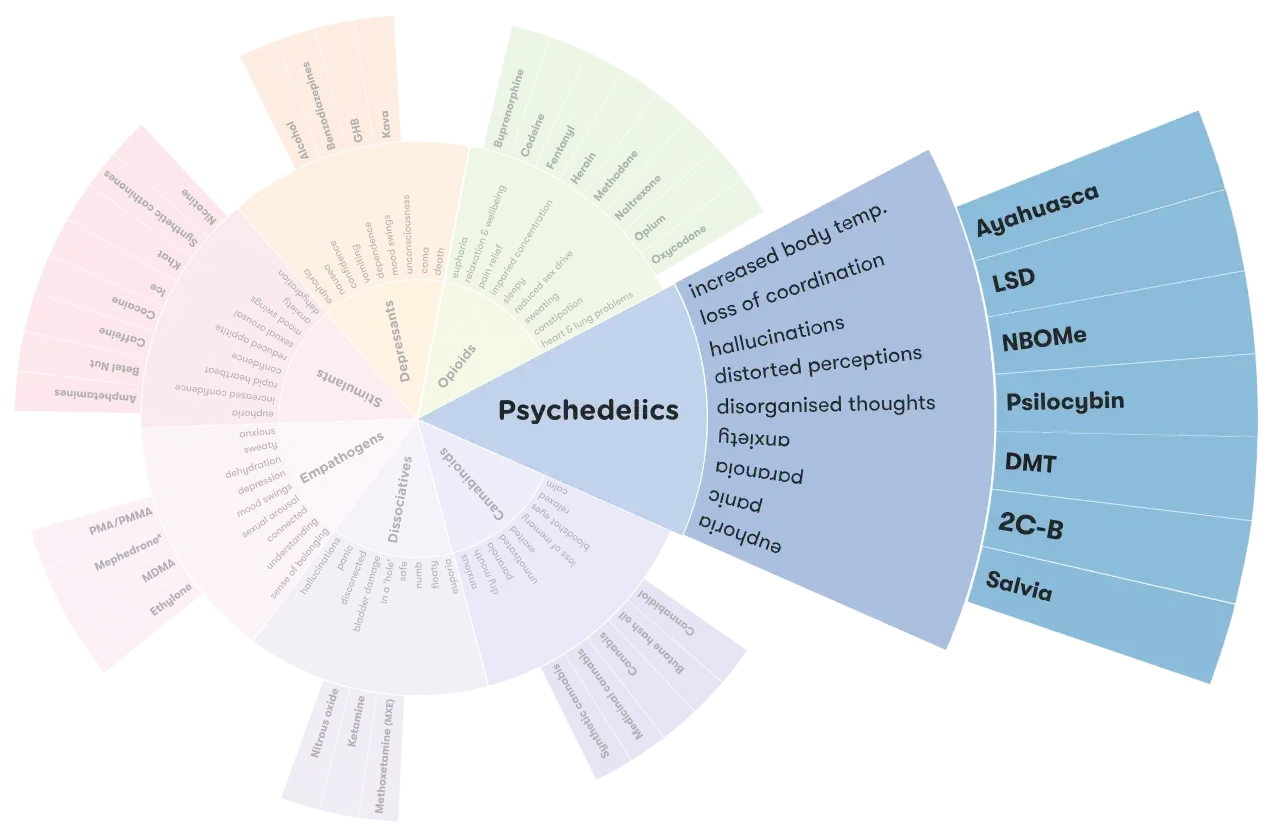How are they used?
NBOMes may be taken under the tongue, held in the cheek, snorted.3
NBOMes are only active when taken through a sublingual route (under the tongue) or insufflated route (snorted).
Effects of NBOMes
Use of any drug can have risks. It’s important to be careful when taking any type of drug.
Severe intoxication and death has been linked to the use of NBOMes, which are reported to be very potent in small doses.2,4
NBOMes can affect everyone differently, based on:
- size, weight and health
- whether the person is used to taking it
- whether other drugs are taken around the same time
- the amount taken
Using NBOMes carries a high risk of overdose due to the small difference between the amount required to produce a high and that which causes overdose. The inconsistent amount of NBOMe on a blotter or in a pill means it can be easy to take too much.
The amount of time someone experiences the effects of NBOMes will be different for each person and depend on the dose and the batch of the drug they have, but might range from 4 – 10 hours.3
NBOMes affects everyone differently. Reported effects have included:
- seeing and hearing things that aren’t there
- mood changes which can include relaxation or agitation
- euphoria
- increased appreciation for music
- enhanced sense of touch
- confusion
- sweating
- short term memory problems
- high blood pressure
- fast heartbeat
- high body temperature
- panic and paranoia.2,5,6
Impact of mood and environment
Drugs that affect a person’s mental state (psychoactive drugs) can also have varied effects depending on a person’s mood (often called the ‘set’) or the environment they’re in (the ‘setting’).
Set is a person’s state of mind, previous encounters with psychedelic drugs, and expectations of what’s going to happen. For example, feelings of stress or anxiety before using NBOMe may result in an unpleasant experience (bad trip).7
Setting is the environment in which someone consumes NBOMe – whether it’s known and familiar, who they’re with, if they’re indoors or outdoors, the type of music and light. For example, using NBOMe in a calm, quiet and relaxed environment could lead or contribute to a pleasant experience but being in a noisy, crowded place may result in a negative experience.7
Being in a good state of mind, with trusted friends and a safe environment before taking 2C-BNBOMe reduces the risk of having a ‘bad’ trip.
Overdose
NBOMes can be very potent even in moderate doses, which increases the risk of overdose.
Call triple zero (000) and request an ambulance if you or someone else has any of the following symptoms (emergency services are there to help and can provide instructions over the phone):
Symptoms of overdose may include:
- intense confusion
- severe agitation
- seizure
- kidney failure
- nausea and vomiting
- rapid heart rate
- rapid or difficulty breathing
- overheating
- attempted suicide
- coma 2, 4-6
Long-term effects
As the use of NBOMes is relatively new, long-term effects are still being determined.
NBOMe and mental health
People with a mental health condition or a family history of mental illness are more likely to experience anxiety or paranoia after using NBOMe.8,9
Bad trips
Some people may have negative experiences taking psychedelics, or experiences they find challenging. This can include experiencing:
- frightening or confronting hallucinations
- intense anxiety and confusion
- fear and paranoia.7, 10
Tolerance and dependence
Similar to other psychedelics, NBOMe does not produce dependence. People who have taken NBOMe report that a tolerance begins almost immediately and can take around 2 weeks to return to zero.11
MIxing NBOMes with other drugs
The effects of taking NBOMe with other drugs – including over-the-counter or prescribed medications – can be unpredictable and dangerous.
NBOMe + cannabis = can increase the risk of anxiety, paranoia, panic attacks and psychosis.11
MBOMe + cocaine = can increase stimulation considerably and result in narrowing of the arteries, increased heart rate and blood pressure.11
More on Polydrug use
Polydrug use is a term for the use of more than one drug or type of drug at the same time or one after another. Polydrug use can involve both illicit drugs and legal substances, such as alcohol and medications.
Getting help
If your use of NBOMes is affecting your health, family, relationships, work, school, financial or other life situations, or you’re concerned about someone else, you can find help and support.
Call the National Alcohol and Other Drug Hotline on 1800 250 015 for free and confidential advice, information and counselling about alcohol and other drugs
Help and Support Services search
Find a service in your local area from our list. Simply add your location or postcode and filter by service type to quickly discover help near you.
If you're looking for other information or support options, send us an email at druginfo@adf.org.au
Path2Help
Not sure what you are looking for?
Try our intuitive Path2Help tool and be matched with support information and services tailored to you.

- Nichols D. Psychedelics. Pharmacological Reviews 2016;68:264–355.
- Poulie C, Jensen A, Halberstadt A, Kristensen J. DARK Classics in chemical neuroscience: NBOMes. ACS Chemical Neuroscience. 2019.
- Lawn W, Barratt M, Williams M, Horne A, Winstock A. The NBOMe hallucinogenic drug series: Patterns of use, characteristics of users and self-reported effects in a large international sample. Journal of Psychopharmacology. 2014:1-9.
- Suzuki J, Dekker M, Valenti E, Cruz F, Correa A, Poklis J, et al. Toxicities associated with NBOMe ingestion, a novel class of potent hallucinogens: A review of the literature. Psychosomatics. 2015;52(2):129-39.
- Kyriakou C, Marinelli E, Frati P, Santurro A, Afxentiou M, Zaami S, et al. NBOMe: new potent hallucinogens – pharmacology, analytical methods, toxicities, fatalities: a review. European Review for Medical and Pharmacological Sciences. 2015;19:3270-.
- Zawilska J, Kacela M, Adamowicz P. NBOMes - Highly potent and toxic alternatives of LSD. Frontiers of Neuroscience. 2020;14.
- Nutt D. Drugs without the hot air : making sense of legal and illegal drugs. Cambridge: UIT Cambridge Ltd; 2012.
- Drugs SBEWS. 25I-NBOMe 2018 cited: 06.10.2022].
- Krebs T Johansen P. Psychedelics and Mental Health: A Population Study. PLoS One. 2013;8(8).
- Brands B, Sproule B, Marshman J. Drugs & Drug Abuse. 3rd ed. Ontario: Addiction Research Foundation; 1998.
- Psychonaut Wiki. 25x-NBOMe 2020 cited: 06.10.2022.
- World Health Organization. Lexicon of alcohol and drug terms 2021 [19.03.2021].

